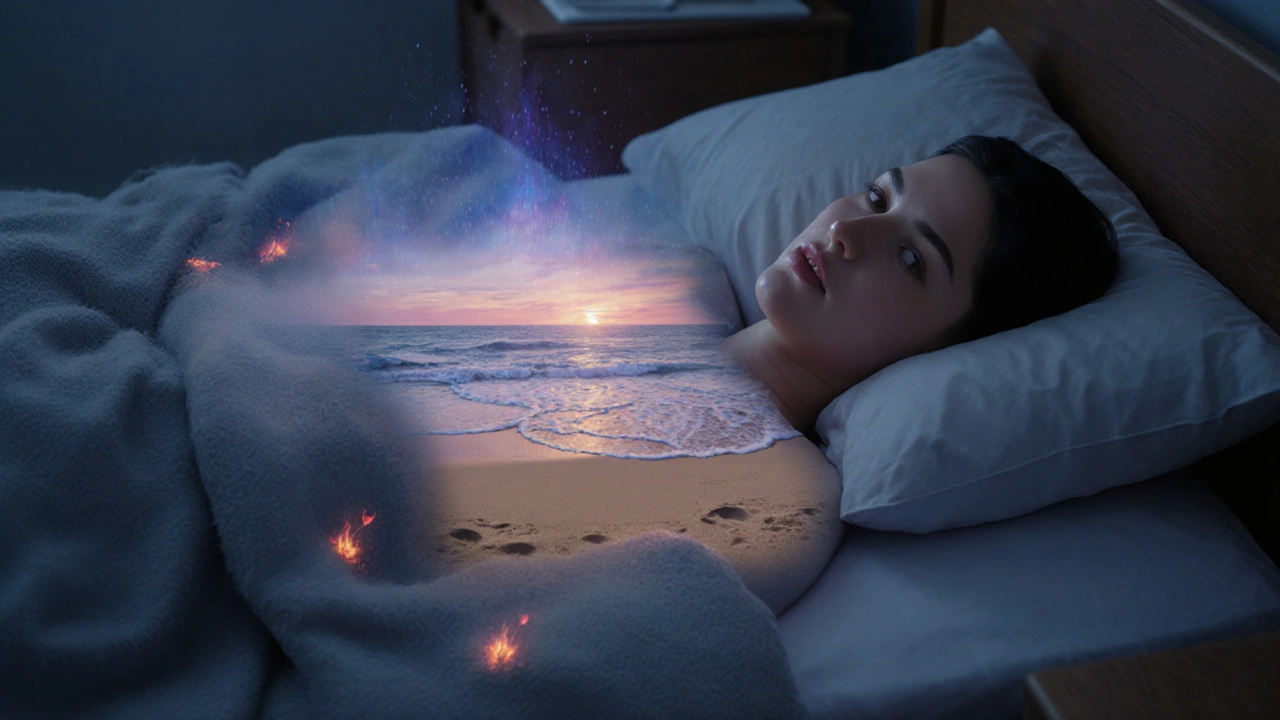When your mind feels like it’s running on overdrive-emails piling up, deadlines looming, sleep slipping away-you don’t need more caffeine or another to-do list. You need to stop. Not for long. Just long enough to reset. That’s where relaxation techniques come in. Not as a luxury. Not as a trend. But as a necessary tool for keeping your mental health from cracking under pressure.
Why Your Brain Needs More Than Just a Break
Your brain isn’t designed to stay in fight-or-flight mode all day. Yet, for many people, it does. Chronic stress floods your body with cortisol, the stress hormone. Over time, that leads to anxiety, irritability, trouble focusing, and even physical symptoms like headaches or stomach issues. Relaxation techniques don’t just make you feel calm-they actually lower cortisol levels, slow your heart rate, and reduce muscle tension. A 2023 study from the University of Sydney found that people who practiced daily relaxation techniques for just 10 minutes saw a 32% drop in perceived stress levels within four weeks. That’s not magic. That’s biology.
Deep Breathing: The Oldest Trick That Still Works
Forget apps, timers, or complicated routines. The simplest and most powerful relaxation tool you have is already inside you: your breath. Deep breathing activates your parasympathetic nervous system-the part that says, “We’re safe now.”
Try this: Inhale slowly through your nose for four counts. Hold for four. Exhale through your mouth for six. Repeat five times. That’s it. No special posture. No meditation cushion. Just sit in your chair, close your eyes if you want, and breathe like you’re letting go of something heavy.
People who use this technique before bed report falling asleep faster. Those who do it before a tough meeting say they feel clearer-headed. And it works because it’s immediate. You can do it in the car, in line at the grocery store, or while waiting for your coffee to brew.
Progressive Muscle Relaxation: Tension Is a Habit
Most of us carry stress in our shoulders, jaw, or forehead without even realizing it. Progressive muscle relaxation (PMR) teaches you to notice that tension-and then release it. It’s like hitting a reset button on your body.
Start by tensing a muscle group for five seconds-say, your fists. Squeeze hard. Feel the strain. Then, let go. Notice the difference. Move to your shoulders, then your face, your stomach, your legs. Each time, you’re training your brain to recognize what relaxed feels like.
One nurse in Perth told me she uses PMR during her 15-minute breaks between shifts. “I used to come home exhausted,” she said. “Now I come home quiet. My body doesn’t hold onto the day anymore.”

Guided Imagery: Your Mind Can Escape, Even When Your Body Can’t
Imagine walking barefoot on warm sand. Hearing waves roll in. Feeling the breeze. Smelling salt in the air. You didn’t leave your desk. But your mind? It took a vacation.
Guided imagery isn’t about being “creative.” It’s about giving your brain a safe place to rest. Studies show it reduces anxiety in people with PTSD, cancer patients undergoing treatment, and even students before exams.
You don’t need a coach. Just find a quiet spot, close your eyes, and picture a place that feels calm to you. It could be a forest, a library, a cozy kitchen. The more sensory details you add-sounds, smells, textures-the stronger the effect. Your brain doesn’t care if it’s real. It just cares that it’s peaceful.
Why Most People Quit Before They See Results
Here’s the truth: relaxation techniques don’t work if you treat them like chores. You won’t feel better after one session. It’s like brushing your teeth-you don’t expect instant results. But do it daily, and over time, your baseline shifts.
Most people try once, feel nothing, and give up. That’s because they’re looking for a miracle, not a habit. The real power comes from consistency. Even five minutes a day, five days a week, changes your nervous system. You start reacting less to stress. You recover faster. You sleep deeper.
Set a reminder. Tie it to something you already do-after brushing your teeth, before checking your phone in the morning, while waiting for the kettle to boil. Make it easy. Make it non-negotiable.

What Doesn’t Work (And What to Avoid)
Not all “relaxation” is real relaxation. Scrolling through social media while lying on the couch? That’s not calming your nervous system. It’s feeding your brain more noise. Watching TV? Same thing. Passive distraction isn’t relaxation-it’s avoidance.
Also avoid forcing it. If you’re sitting there thinking, “I should be relaxed,” you’re creating more stress. Relaxation isn’t about achieving a perfect state. It’s about giving yourself permission to let go, even a little.
And don’t wait until you’re overwhelmed. That’s like waiting for your car to break down before changing the oil. Start small. Start now. Even when things feel okay.
Real People, Real Results
A teacher in Fremantle started using deep breathing between classes. Within two weeks, she noticed she wasn’t snapping at students anymore. A construction worker in Joondalup began doing PMR after his shifts. His chronic neck pain faded. A college student in Subiaco used guided imagery before exams-and passed her finals with her highest grades ever.
These aren’t outliers. They’re people who made a tiny change and let it ripple.
Where to Start Today
You don’t need a course. You don’t need an app. You just need five minutes.
- Set a timer for five minutes.
- Find a quiet spot-anywhere. Even your parked car works.
- Do one technique: deep breathing, PMR, or guided imagery.
- Don’t judge how well you did. Just finish.
- Do it again tomorrow.
That’s it. No pressure. No perfection. Just presence.
Relaxation isn’t about escaping life. It’s about showing up for it-with a calmer mind, a quieter body, and more space to breathe.
How long does it take for relaxation techniques to work?
You might feel calmer right after one session, especially with deep breathing. But real changes in your stress response-like better sleep, less anxiety, or quicker recovery from triggers-usually show up after 2 to 4 weeks of consistent practice. Think of it like building muscle: small efforts, repeated over time, create lasting strength.
Can relaxation techniques replace therapy or medication?
No. They’re not a replacement. But they’re a powerful complement. If you’re in therapy or taking medication for anxiety, depression, or PTSD, relaxation techniques can enhance those treatments by helping your body return to balance faster. Many therapists now include breathing or PMR exercises in their sessions. Always talk to your doctor before making changes to your treatment plan.
What if I can’t quiet my mind during relaxation?
That’s normal. The goal isn’t to stop thinking-it’s to notice your thoughts without getting caught in them. When your mind wanders, gently bring your focus back to your breath, your muscles, or your image. Every time you do that, you’re strengthening your ability to calm down. It’s not about success. It’s about showing up.
Are some relaxation techniques better than others?
It depends on you. Deep breathing works fast and is easy to do anywhere. PMR is great if you carry physical tension. Guided imagery helps if your mind races with worry. Try each one for a few days. Stick with the one that feels most natural. There’s no “best”-only what works for your body and your life.
Can kids or older adults use these techniques?
Absolutely. Kids respond well to guided imagery-imagine floating on a cloud or being a tree in the wind. Older adults often find PMR helpful for easing joint stiffness and improving sleep. These techniques are adaptable. You don’t need to be young, fit, or spiritual. You just need to be willing to pause for a few minutes.
